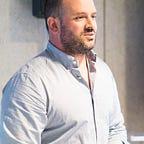From Framework to Process
Methodologies and frameworks come as a result of concrete experiences. Since the beginning of time there has been a constant need to define patterns and concepts in order to facilitate our way of living and history is full of these types of situations. Take the invention of the wheel during the Neolithic Age for example, it started with the need of facilitating the movement of goods and then people.
Nowadays, this is a trivial concept that is taken for granted. When we group all these concepts and patterns together and add a iterative time-boxed cycle with re-assessment at the end of every cycle to create improvement, we get evolution!
In the end, a framework is a set of high level artifacts that gives or suggests an high level approach in order to solve problems or challenges. Frameworks are not recipes that can be put into practice as-is while expecting those problems or challenges to be solved in the meantime! However, it does give a basic orientation, which in combination with the context where applied, provides the ability to define well structured processes.
Solution delivery has been the focus of my work since I started working. I have been lucky to work with extraordinary people from various technologies, different processes of delivery, different business lines and different cultures. All these different aspects have (at least) one thing in common — the goal of delivering solutions that fulfills the needs and requirements of clients and companies.
The methodologies for software delivery have been evolving throughout the years where Waterfall has been giving way to Agile. My goal is not to make a comparison between the two, there still exists use cases where both methodologies are applicable separately or sometimes even together as a hybrid approach. However, based on my experiences the Agile methodologies have already been proven as the best fit for most software delivery use cases.
My first professional contact with Agile methodologies was with Scrum. A colleague of mine, who was an enthusiastic user of the Scrum methodology, started to introduce it to the department where I was working and coached us on the extent of his certified knowledge. We committed to adopting it and used it as the methodology that supported our delivery process. The experience was very stimulating and we were able to design a delivery pipeline with that methodology as the base line.
No methodology or framework should be used as-is and I truly believe that one of the key factors of success is to contextualize the methodology to the environment where it is going to be applied. However, this does not stop here! In order to have evolution it is crucial to evaluate that process over time and improve when needed. Nothing is ever finished, there is always space for improvement.
The Agile awareness at that company, was very low and in some cases non-existent. The introduction of this new methodology created a huge impact on the rest of the company (business and management). Even though our department had everything to make it work (the knowledge, the will, the commitment…), we were missing the link with our business and management layer. Over time we were forced to abort this approach due to reluctance to change and the lack of sponsorship from key users.
Wrapping up
Over the years I have learned, that many changes in an organization are driven from the IT department or triggered by an IT change, request or innovation thread. These changes are challenging for organisations. It takes a lot of time to reach a significant level of awareness and demands a lot from the organisations (the bigger the organisation the more demanding it is).
Nowadays, the top level of organisations are more aware of Agile methodologies and in most cases, end up creating an innovation thread to promote change managed by the most empowered CxO .
For any process, or project, or methodology or framework to succeed independently of the type of organisation, it is imperative to have sponsorship from the persons who really have the power to decide, otherwise time and money will be spent and no tangible investments will be made!
